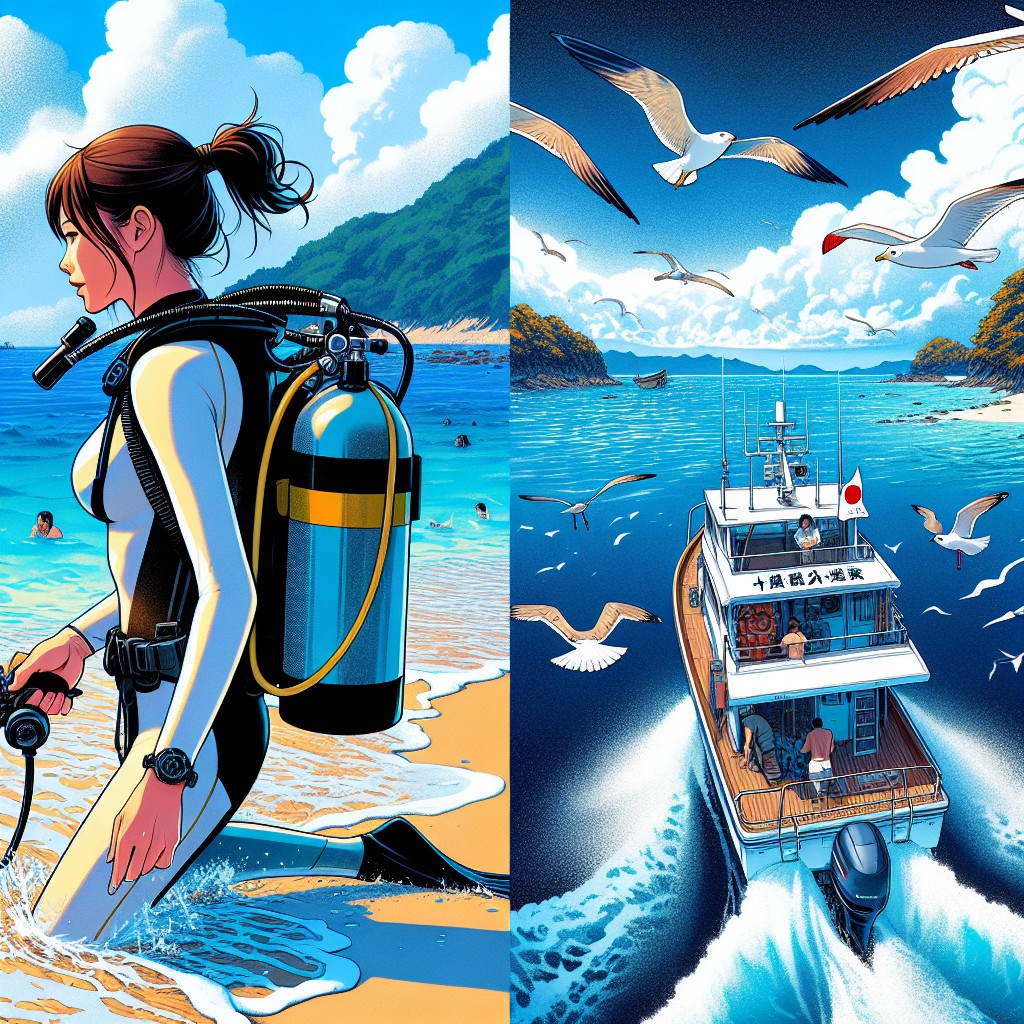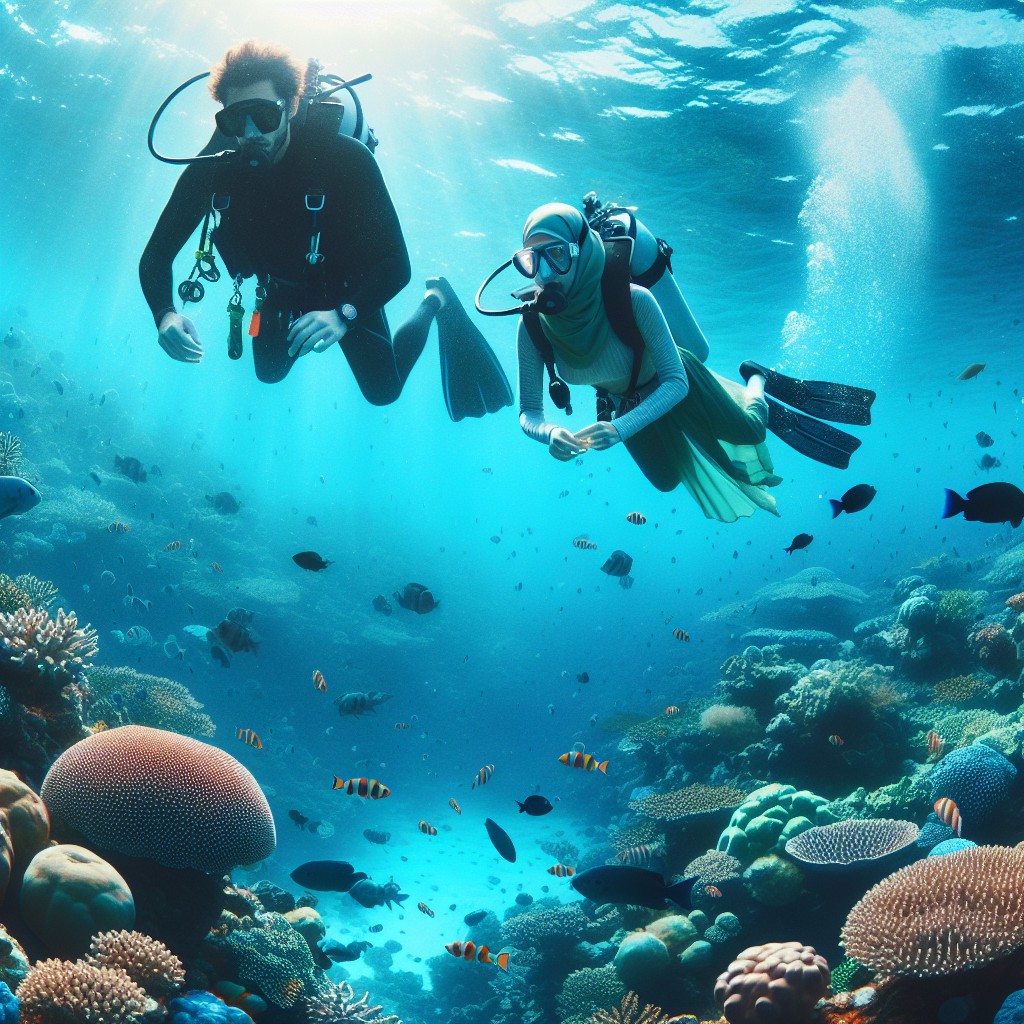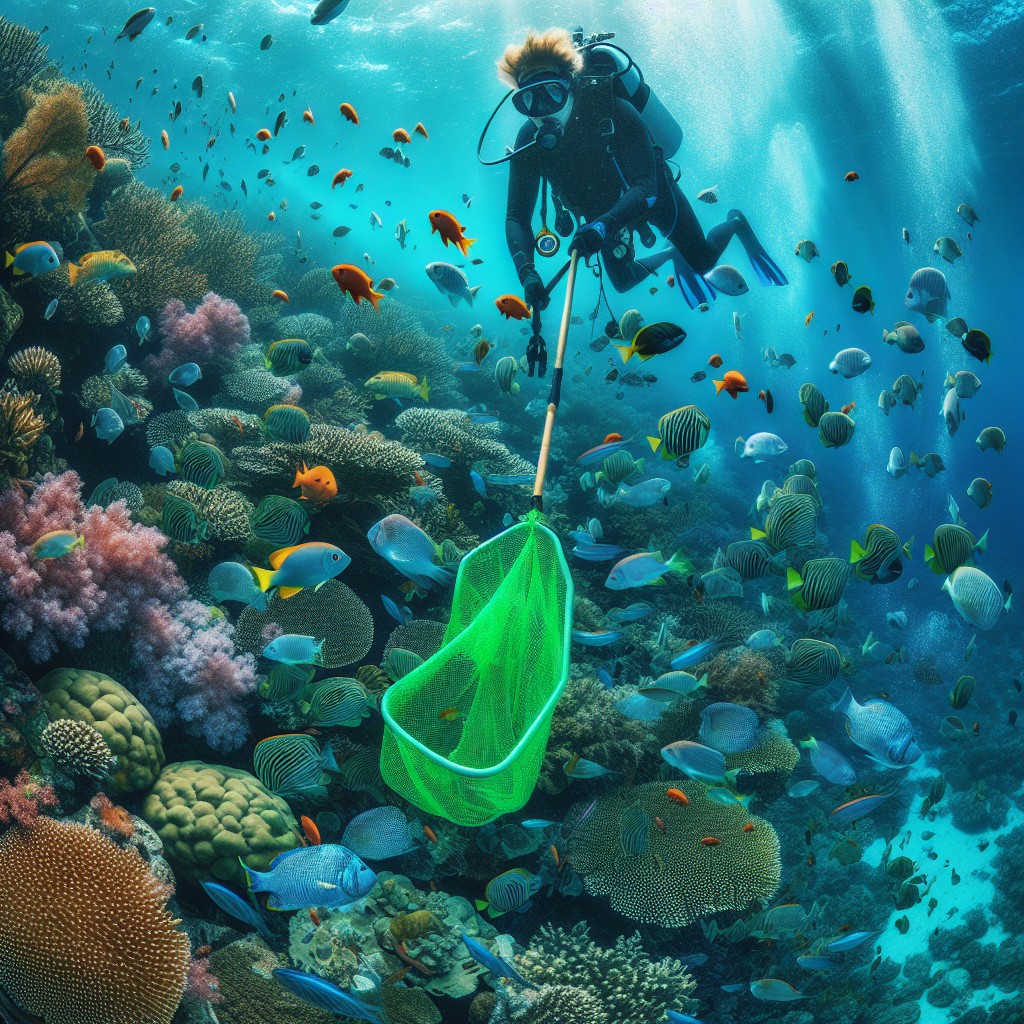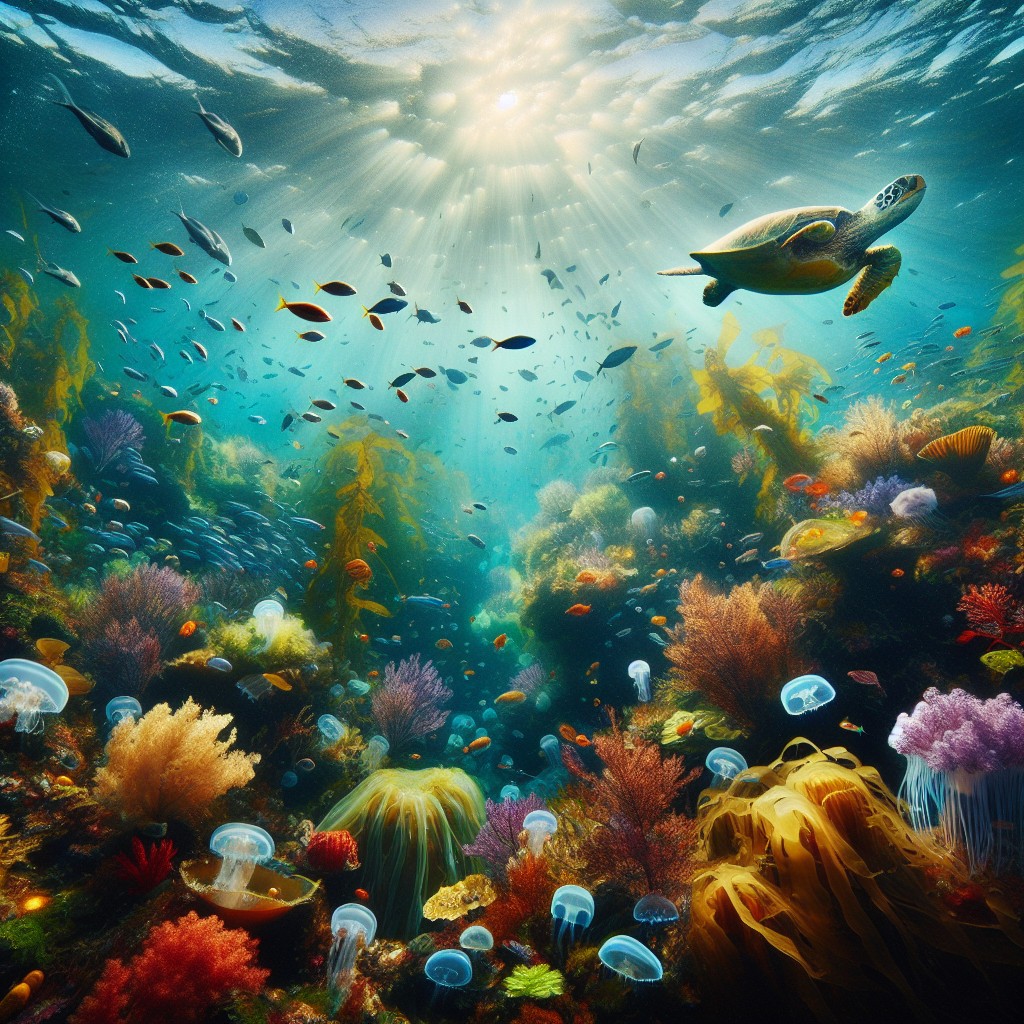Diving in Japan Overview
Scuba diving in Japan offers an array of unique experiences for divers of all levels. From the pristine waters surrounding remote islands to vibrant coral reefs teeming with marine life, Japan’s underwater landscapes are a diver’s paradise.
Diverse Diving Opportunities
Japan presents numerous diving opportunities, accommodating varying interests and skills. The country features diverse environments such as ice diving in Hokkaido, cave diving in Okinawa, and wreck diving near its smaller islands, allowing divers to explore a rich tapestry of underwater landscapes. This variety makes it an attractive destination for both novice and experienced divers alike.
| Type of Diving | Description |
|---|---|
| Ice Diving | Explore frozen underwater landscapes in Hokkaido during winter months. |
| Cave Diving | Navigate captivating underwater caves in Okinawa. |
| Wreck Diving | Discover historical shipwrecks scattered around Japan’s islands. |
Each type of diving experience offers something different, allowing divers to deepen their understanding of marine ecosystems and enjoy the beauty of Japan’s underwater world.
Year-Round Diving Season
The diving season in Japan lasts throughout the year, with most regions offering diving options even in winter. While the offseason is typically during the coldest months, divers often return to the water as early as spring, particularly in Okinawa where the weather remains warm year-round (Japan Travel).
| Season | Water Temperature (°F) | Visibility (feet) |
|---|---|---|
| Winter | 58 – 65 | 15 – 30 |
| Spring | 60 – 70 | 30 – 50 |
| Summer | 75 – 80 | 50 – 70 |
| Fall | 65 – 75 | 30 – 50 |
Water temperatures vary based on the season and location, and different dive sites may present contrasting conditions. Using the appropriate gear, such as a drysuit in winter or a 5 mm to 7 mm wetsuit in summer, ensures a comfortable dive experience.
Visitors to Japan can expect thrilling encounters with unique marine life, especially during winter months when cooler waters draw in unusual species. Planning a dive trip here not only opens doors to spectacular underwater environments but also aligns with the seasons to optimise diving conditions. For more insights into the best dive sites in the country, feel free to explore our article on best dive sites in japan.
Top Dive Destinations in Japan
Japan offers a variety of exceptional dive destinations that cater to divers of all levels. The unique marine life and stunning underwater landscapes make these locations highly sought after. Below are some of the top dive spots in Japan.
Okinawa and Ishigaki
Okinawa is renowned for its crystal-clear waters and vibrant coral reefs, making it a premier destination for scuba diving. Among the islands, Ishigaki stands out, particularly for its opportunities to dive with reef manta rays and explore the local coral reefs. Although the health of the coral in the region is compromised, with only 1% of the largest coral reef still thriving, divers can still encounter a diversity of marine life, including turtles, octopuses, and white tip reef sharks (Dive O’Clock).
Unique Features of Okinawa and Ishigaki
| Highlights | Description |
|---|---|
| Manta Ray Encounters | Dive with reef manta rays near Ishigaki island. |
| Coral Reef Diving | Explore beautiful yet challenged coral gardens. |
| Muck Diving | Suitable for spotting unique small marine creatures like nudibranchs, shrimps, and leaf fish (Dive O’Clock). |
For divers interested in wreck diving, Okinawa also features several accessible dive sites. Further information can be found in our article on wreck diving in Japan.
Kerama Islands and Yonaguni Island
The Kerama Islands are recognised for their stunning underwater visibility and rich marine biodiversity. The islands are perfect for diving, showcasing colourful coral reefs and diverse fish populations. The nearby Yonaguni Island is famed for the controversial underwater ruins that appeal to divers and archaeologists alike.
Highlights of Kerama Islands and Yonaguni Island
| Location | Key Attractions |
|---|---|
| Kerama Islands | Clear waters, vibrant coral, and a wide variety of marine life. |
| Yonaguni Island | Unique underwater ruins, ideal for exploration and photographic opportunities (underwater ruins of yonaguni). |
Izu Islands and Ogasawara Islands
The Izu Islands and Ogasawara Islands are popular for their unique ecosystems and opportunities for eco-friendly diving experiences. The Izu Islands offer various diving spots that feature colorful marine life and geological formations. Ogasawara Islands, a UNESCO World Heritage Site, provide some of the best diving experiences with its pristine waters and diverse aquatic life.
Key Attraction Comparison
| Island Group | Notable Features |
|---|---|
| Izu Islands | Explosive marine biodiversity and geological diversity suitable for all experience levels. |
| Ogasawara Islands | Known for eco-diving opportunities and unique marine species, making it a must-visit for nature lovers. |
These dive destinations in Japan showcase the best of the country’s underwater wonders. For those planning a diving holiday in Japan, considering both shore diving vs boat diving in japan will help determine which experience best suits their diving preferences and skills.
Shore Diving in Japan
Shore diving offers a unique way to explore Japan’s vibrant underwater ecosystem. With diverse marine life and stunning coral formations readily accessible, it presents an excellent opportunity for divers looking to experience Japan’s underwater world without the need for a boat.
Unique Experiences and Locations
Japan’s shore diving locations are diverse, ranging from the tranquil waters of Okinawa to the historical wreck sites around Chichijima in the Ogasawara Islands. Shore diving here allows divers to experience intricate coral gardens and an array of marine life.
| Location | Highlights |
|---|---|
| Okinawa | Cave diving, rich marine biodiversity |
| Chichijima | Wreck diving from WWII, large schools of fish, dolphins |
| Hokkaido | Unique ice diving experiences |
| Yonaguni | Underwater ruins and marine biodiversity |
Chichijima, often referred to as “the Galapagos of the Orient,” offers memorable wreck diving experiences, allowing divers to explore sunken ships just off the shore. Notably, this location has been recognised as a UNESCO World Heritage site since 2011, further enhancing its appeal for divers. Additionally, from December to March, divers can sometimes spot humpback whales in the area, adding an unforgettable experience to their dive underwater ruins of Yonaguni.
Benefits of Shore Diving
Shore diving presents several advantages that make it an appealing choice for many divers.
- Accessibility: Divers can often walk directly into the water from the beach, eliminating the need for a boat ride.
- Cost-effective: Since there are no boat fees or charter costs, shore diving can be a more affordable option.
- Flexibility: Divers can choose their own dive times and explore at their own pace, granting more freedom compared to boat dives.
- Diverse Environments: From coral reefs to underwater wrecks, shore diving locations in Japan offer a variety of ecosystems to explore, enhancing the overall diving experience.
With these benefits, shore diving can provide an intimate connection to the underwater world. For a deeper understanding of Japan’s diving opportunities, consider exploring the best dive sites in Japan and related diving environments.
Boat Diving in Japan
Boat diving offers unique opportunities to explore some of the most exceptional underwater environments in Japan. With access to remote dive sites and the ability to reach deeper waters, boat diving can be an exciting option for scuba divers seeking variety and adventure.
Exceptional Boat Dive Sites
Japan boasts a diverse range of outstanding boat dive locations. One notable site is the Yonaguni Monument in Okinawa, where divers can explore mysterious underwater stone ruins ranging from shallow depths of approximately 5 meters (16 feet) to depths of about 25 meters (82 feet). The area is characterised by clear waters that remain warm year-round, making it an attractive destination for divers, although strong currents make it more suitable for experienced divers.
Other well-known boat diving sites include Ishigaki Island, famed for its vibrant coral reefs and the presence of reef manta rays. Despite the challenges faced by Japan’s coral reefs, divers can still encounter an array of marine life, including turtles, octopuses, and various fish species (Dive O’Clock).
| Dive Site | Depth (meters) | Marine Life |
|---|---|---|
| Yonaguni Monument | 5 – 25 | Stone ruins, clear waters |
| Ishigaki Island | 10 – 30 | Manta rays, turtles, octopuses |
Considerations for Boat Diving
While boat diving provides access to fantastic dive sites, it does come with its own set of considerations. Factors such as boat comfort, the experience of the crew, and the diving conditions are important. Divers should be aware that certain areas may have unpredictable conditions, including strong currents and limited visibility.
For instance, while diving along the Honshu southern coast, divers may experience colder water temperatures during winter months ranging from 14 to 18 degrees Celsius (58 to 65 degrees Fahrenheit). Proper thermal protection is essential for comfort and safety.
It is also worth noting that while scuba diving remains less common among international visitors compared to local divers, the infrastructure available for boat diving is well developed, particularly in popular areas like Okinawa. Divers planning to dive in Japan should also consider researching any required permits or regulations specific to certain dive locations.
For more insights on diving options, divers can check out our links to the best dive sites in Japan and information on diving conditions in Japan.
Popular Diving Locations in Japan
Japan is home to a variety of exhilarating diving locations, each offering unique experiences for divers. Two notable spots are Chichijima and Usami, as well as Hatsushima and Teishijima Island. These areas provide a range of diving opportunities suitable for divers of all levels.
Chichijima and Usami
Chichijima, located in the Ogasawara Islands, is often referred to as “the Galapagos of the Orient.” This destination is famous for its incredible wreck diving opportunities, featuring sunken ships from World War II just off the shore. Divers can encounter a diverse array of marine life, including large schools of fish, graceful stingrays, and dolphins. From December to March, visitors also have the chance to spot humpback whales in the area. Chichijima was designated a UNESCO World Heritage site in 2011, further enhancing its appeal for diving enthusiasts (PADI).
Usami, situated in Shizuoka Prefecture, caters to both beginner and experienced divers with its beach and shore dive sites. New divers have an almost guaranteed chance of seeing bullhead sharks, and there are occasional sightings of stingrays and sea turtles (Japan Travel).
| Location | Key Features |
|---|---|
| Chichijima | Wreck diving, diverse marine life, UNESCO World Heritage site, whale sightings (Dec-Mar) |
| Usami | Beginner-friendly, bullhead sharks, stingrays, sea turtles |
Hatsushima and Teishijima Island
Hatsushima is another popular diving destination located near the Izu Peninsula. Known for its rich coral reefs and vibrant marine biodiversity, Hatsushima offers divers the opportunity to encounter various species, including colourful nudibranchs and a variety of fish. The clear waters and diverse ecosystems make it a fantastic spot for underwater photography and exploring the underwater landscape.
Teishijima Island, also in the Izu region, presents a serene diving environment, attracting divers seeking a quieter experience. The island boasts beautiful underwater gardens and thriving marine life, making it ideal for both beginner and advanced divers. Teishijima is known for its next-level visibility, which enhances the overall diving experience.
| Location | Key Features |
|---|---|
| Hatsushima | Coral reefs, diverse marine life, great for underwater photography |
| Teishijima Island | Serene environment, thriving marine gardens, excellent visibility |
These locations exemplify the diversity of diving experiences available in Japan. Whether one prefers the adventurous wreck dives of Chichijima or the tranquil waters of Teishijima Island, each destination showcases the beauty of Japan’s underwater world. For those interested in more dive sites, the article on best dive sites in Japan offers additional insights.
Practicalities of Diving in Japan
When planning a scuba diving holiday in Japan, understanding the associated costs and accessibility is crucial. Additionally, familiarising oneself with diving conditions and equipment can enhance the experience.
Costs and Accessibility
Japan is not a cheap dive destination. The average cost for a day of diving can exceed $100 USD, while accommodations such as private rooms start at around $50 per night. For those considering travel between dive locations, flights can cost upwards of $100 USD for a round trip (Dive O’Clock).
| Expense Category | Estimated Cost (USD) |
|---|---|
| Daily Diving Cost | $100+ |
| Private Room (per night) | $50+ |
| Round Trip Flight | $100+ |
Accessibility varies by region, with Okinawa being a highly sought-after spot for divers, particularly among tourists (Scuba Diving). Other locations, while offering unique experiences, may be less frequented by foreign divers.
Diving Conditions and Equipment
Diving conditions in Japan can vary significantly by season and location. The southern coast allows for year-round diving, with winter months offering cooler waters that enhance visibility and the opportunity to encounter unusual marine species. Water temperatures range from about 12°C (55°F) in winter to 25°C (77°F) in summer, necessitating different wetsuit choices.
In winter, drysuits are commonly used, whereas divers tend to opt for 5 mm to 7 mm full wetsuits in summer. Visibility can range from 15 to 70 feet depending on specific dive sites, and currents may be present at certain locations.
For a successful diving experience, divers should ensure they have the appropriate equipment, including wetsuits suited to current water temperatures and conditions. More insight on diving in Japan can be gained through articles like diving conditions in Japan and ecofriendly diving in Japan. Understanding these practical considerations will help divers prepare adequately for their underwater adventures in Japan.



